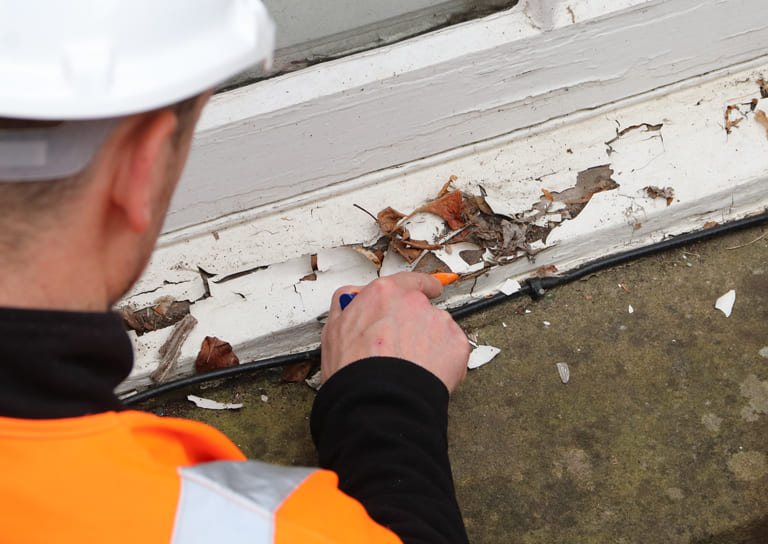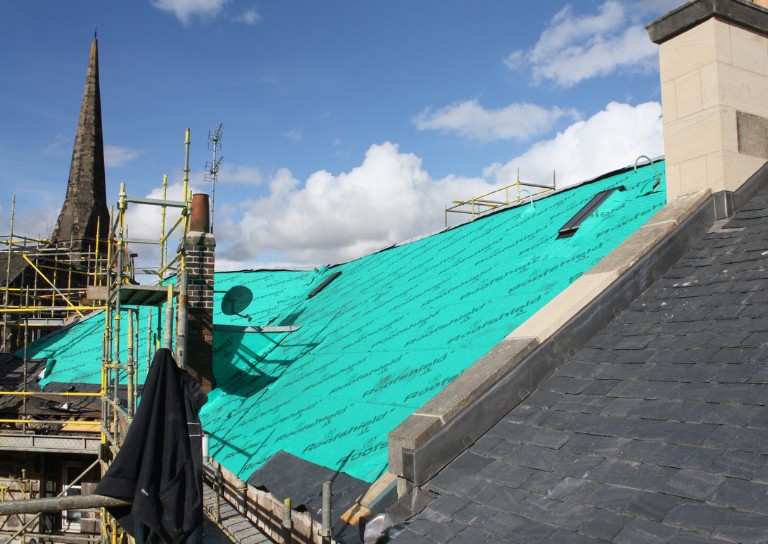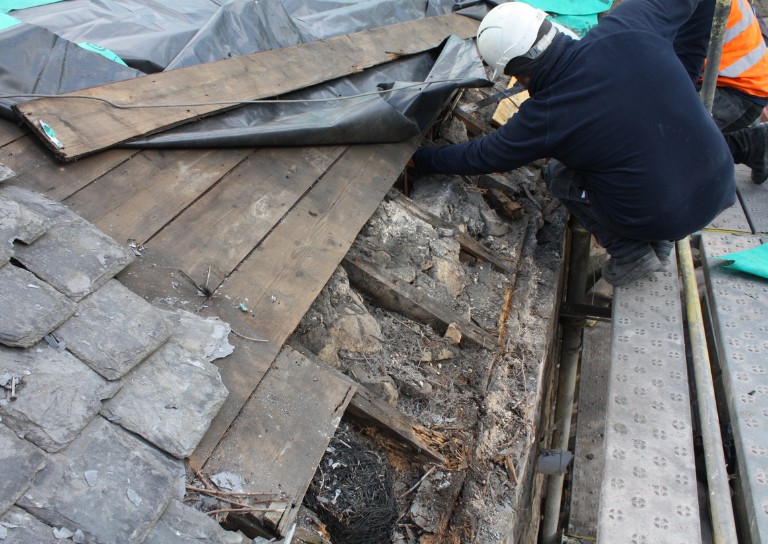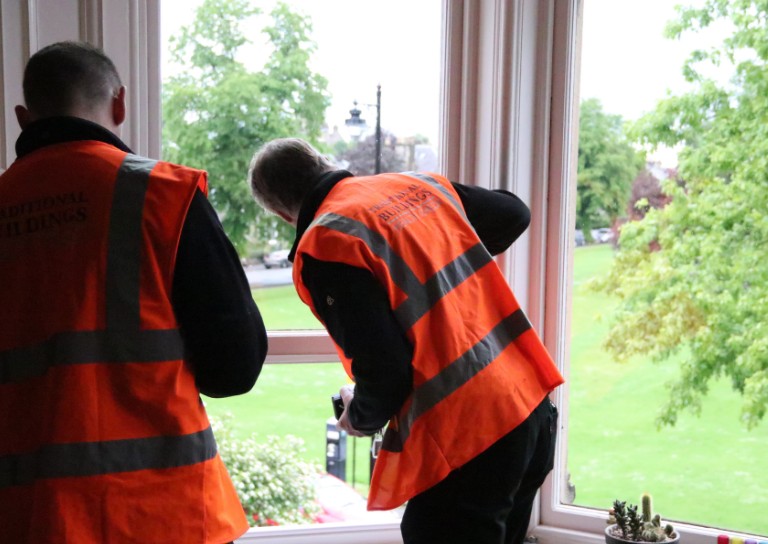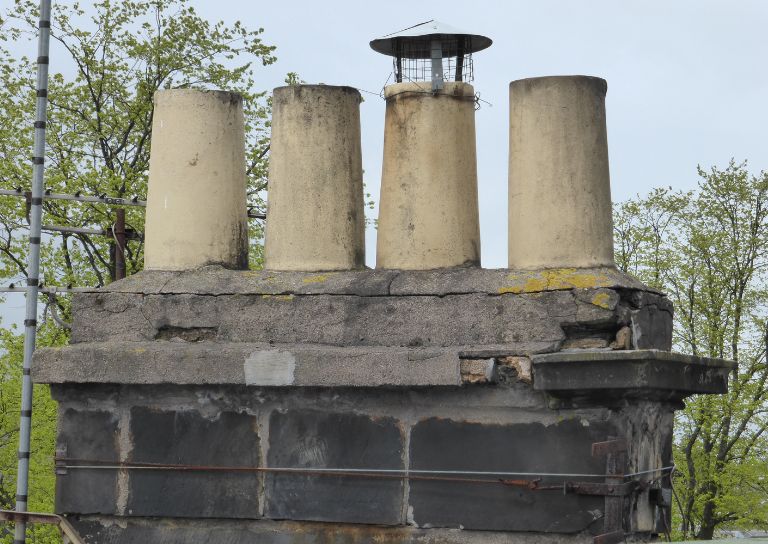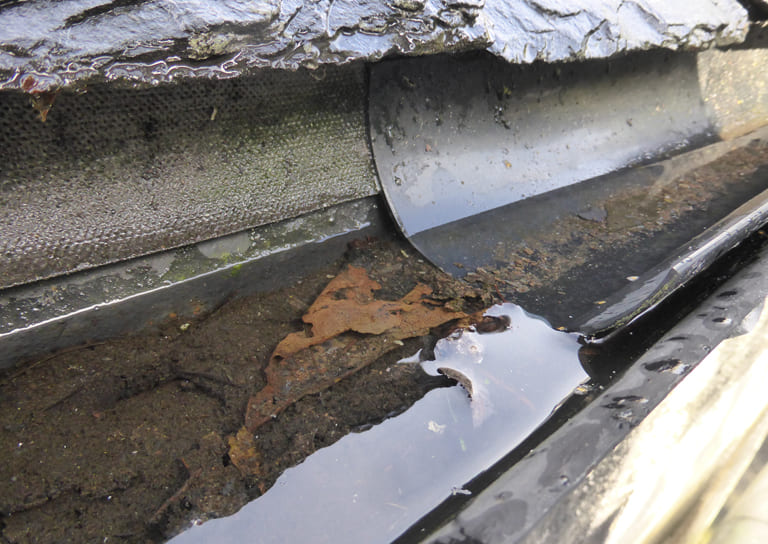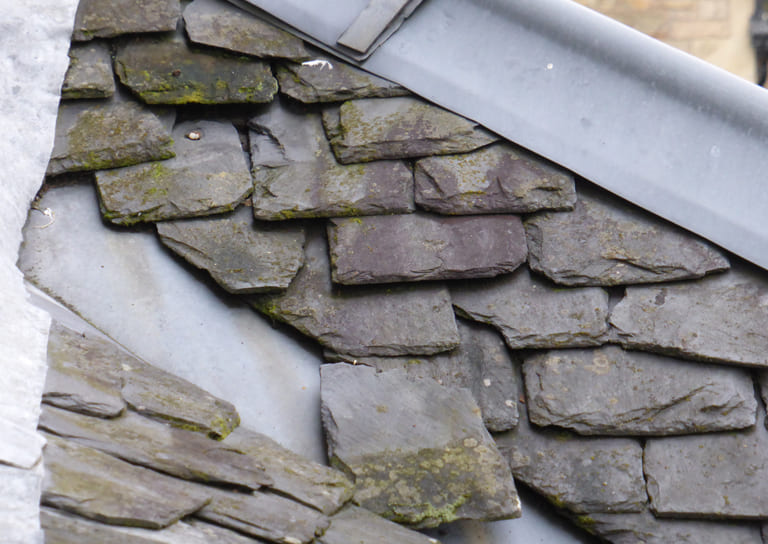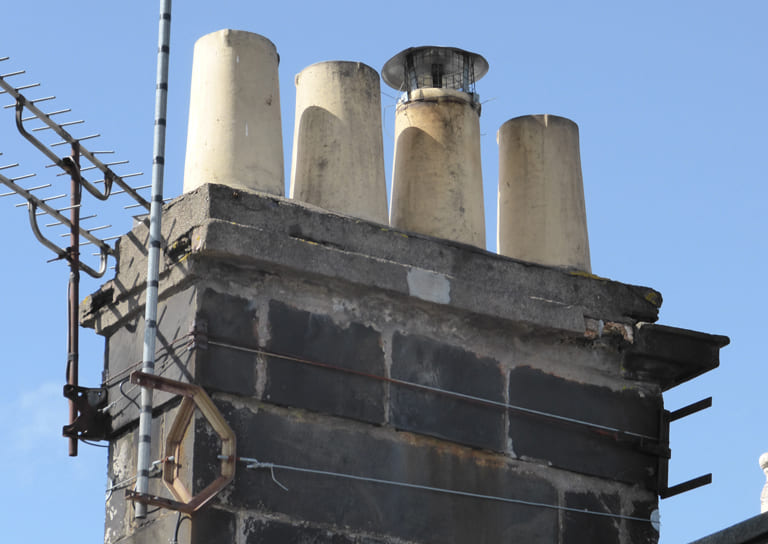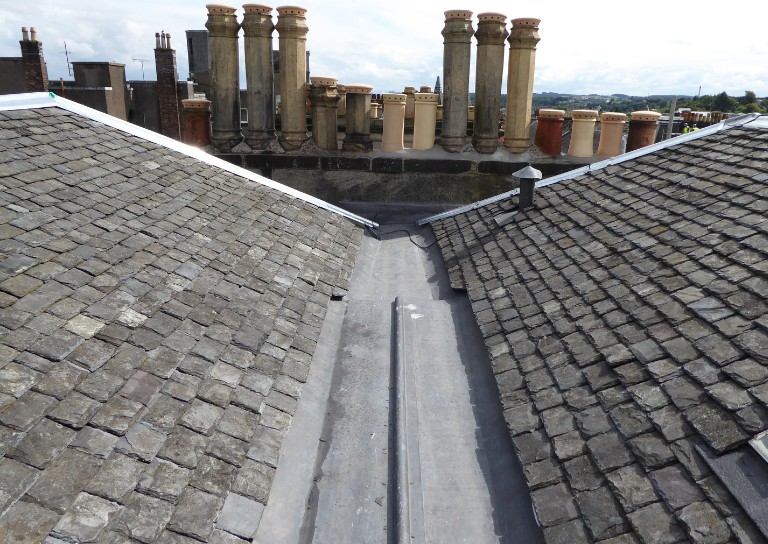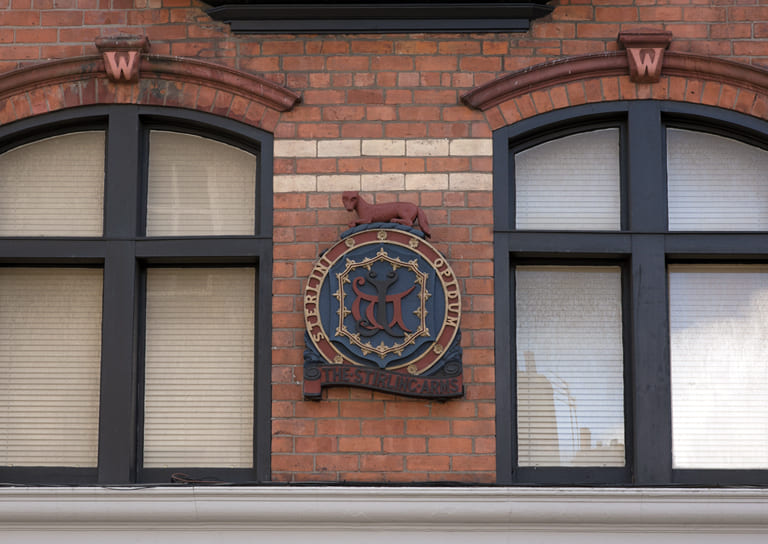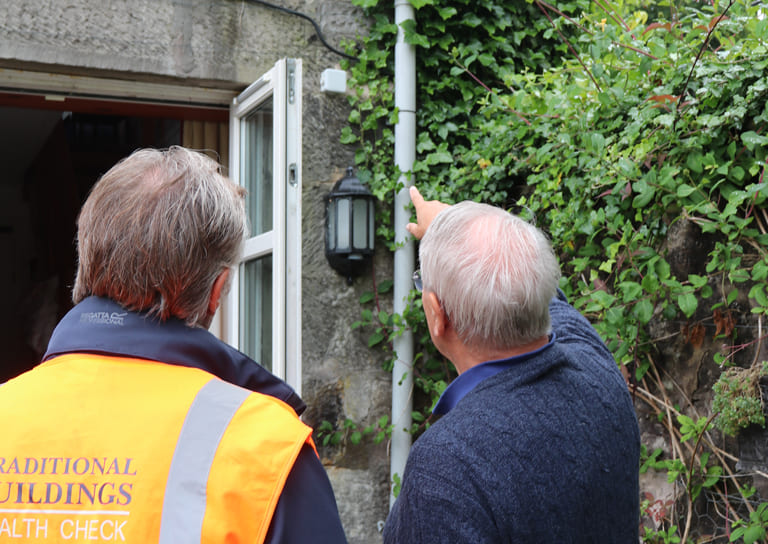Pitched and flat roof problems on older buildings
The roof is one of the most important parts of a traditional building but is often the most neglected due to accessibility issues. Checking your roof regularly is important to ensure your building remains wind and watertight.
Slate Roofs
Scottish slate is our most common traditional pitched roof covering and was commonly used from the late 18th century. In Stirling, slate from quarries along the Highland Boundary fault (commonly referred to as Aberfoyle slate) was used. Depending on the age of your building it may have a different slate such as Welsh slate which became more common from the end of the 19th century.
Slate is very durable and can be expected to last for up to 100 years or more. In Scotland, slate is traditionally fixed to timber sarking boards using a single nail at the head of the slate. The top edges of the slate are trimmed to form ‘shoulders’. This allows individual slates to be swung to one side to allow access to remove and replace any broken slate without disrupting those surrounding it.
Scottish slate is no longer quarried so repair relies on stocks of reclaimed slate.
For more information on repairing slate roofs read the HES Inform Guide ‘Repairing Scottish Slate Roofs’.
Common Slate Roof Problems
Other roof coverings
Flat Lead Roofs
Your roof may have other types of covering such as lead. HES has a series of Inform Guides on roofing including ‘Roofing Leadwork’.
Explore further common problems with leadwork on older buildings
Bituminous Sheet Flat Roofs
Flat roofs may be covered with a modern bitumen felt. This has a short life of around 20 years and can soon become cracked allowing water ingress. Lead is a better option for the majority of flat roofs. Contact the TBHC team for advice.
Common flat roof problems
Roof problems: what you can do
- Check your roof covering at least once a year and after severe weather.
- An initial inspection can often be done from the ground aided by binoculars or with a camera with a good zoom lens.
- Some roofing contractors will do an annual roof check and will undertake any minor repairs. Larger works will require to be planned.
- Owners of traditional buildings in Stirling can join the Traditional Buildings Health Check and get a regular drone survey of their roof
If you are doing comprehensive repairs to your roof you may need Listed Building Consent or Planning Permission if you are in a Conservation Area. See the Stirling Council Supplementary Guidance on Roofing for more information.

